 WhatsApp
WhatsApp
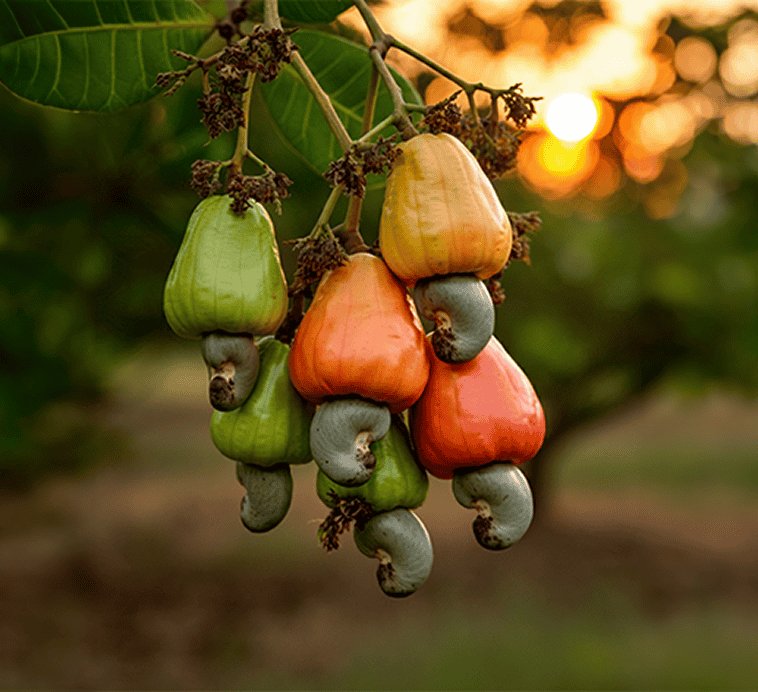
Cashew (Anacardium occidentale L), native to Northeast Brazil, was introduced to Sri Lanka by the Portuguese for soil erosion control. Although present for centuries, commercial cultivation began in 1973 with the Sri Lanka Cashew Corporation. Key growing areas are in the dry zone, including Puttalam, Vavuniya, Mannar, Jaffna, Kilinochchi, Trincomalee, Kurunegala, and Hambantota.
In 2023, Sri Lanka had 14,845 hectares of cashew under cultivation, with 11,134 hectares in bearing. The country produced over 13,000 metric tons of raw cashew nuts, yielding an average of 1,169 kg/ha.
Cashew cultivation has declined by over 30% in the last decade, dropping from 21,370 hectares in 2014 to current levels.
Despite the reduction in cultivated area, average yields have more than doubled, with major improvements observed between 2018 and 2020.
Forbes & Walker Fine Foods sources premium raw cashews from Puttlam (home to its processing facility), as well as from Kurunegala, Mannar, and Batticaloa—ensuring consistent quality and supply.
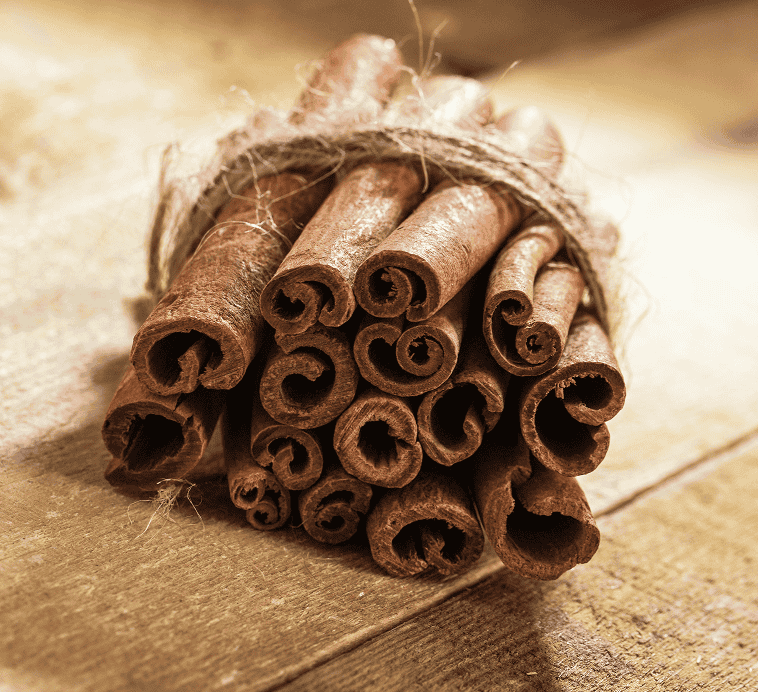
Sri Lanka, historically known as Serendib, has been renowned for centuries for its prized cinnamon. Native to the island, Cinnamomum verum—“true cinnamon”—is celebrated as the finest in the world. Revered by ancient civilizations and still a key export, its cultivation remains a tradition passed down through generations, rooted in skill, labor, and national pride.
Cinnamon is primarily grown in Sri Lanka’s southern coastal regions, covering over 30,000 hectares with ideal climate and soil conditions.
Native to Sri Lanka, true cinnamon (Cinnamomum verum) has been cultivated for over 2,000 years, making the country the world’s leading producer.
The traditional, artisanal process involves hand-peeling the bark, rolling it into quills, and sun-drying, enhancing its aroma and quality.
Cinnamon farming is largely organic, using eco-friendly methods and supporting smallholder, community-based farming systems.
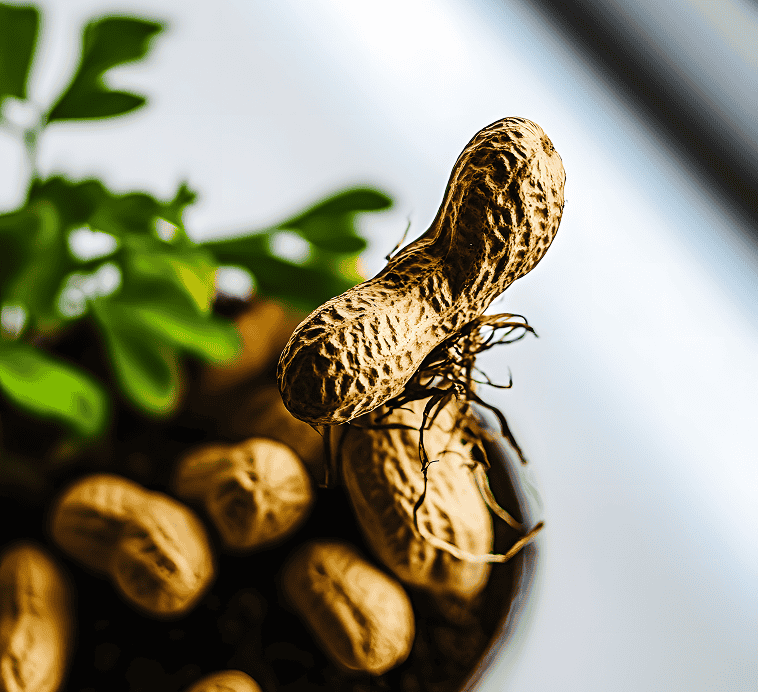
In Sri Lanka’s dry North Central and Eastern Provinces, peanuts—locally known as “rata cadju”—are a vital yet understated crop. Grown by generations of smallholder farmers, they support rural livelihoods and play an important role in food security and local industry.
Peanuts are grown in Sri Lanka's dry zones (Anuradhapura, Moneragala, Kurunegala, Ampara) in sandy, well-drained soils, often as an inter-crop with larger trees.
Originally from South America, peanuts were introduced to Sri Lanka and have become integral to small-scale farming in semi-arid regions.
Peanuts are sun-dried, shelled, and graded, sold raw, roasted, or processed into peanut butter, oil, and snacks for local and export markets.
The peanut sector supports farming families and contributes to the economy, with growing global demand for plant-based protein increasing its market value.
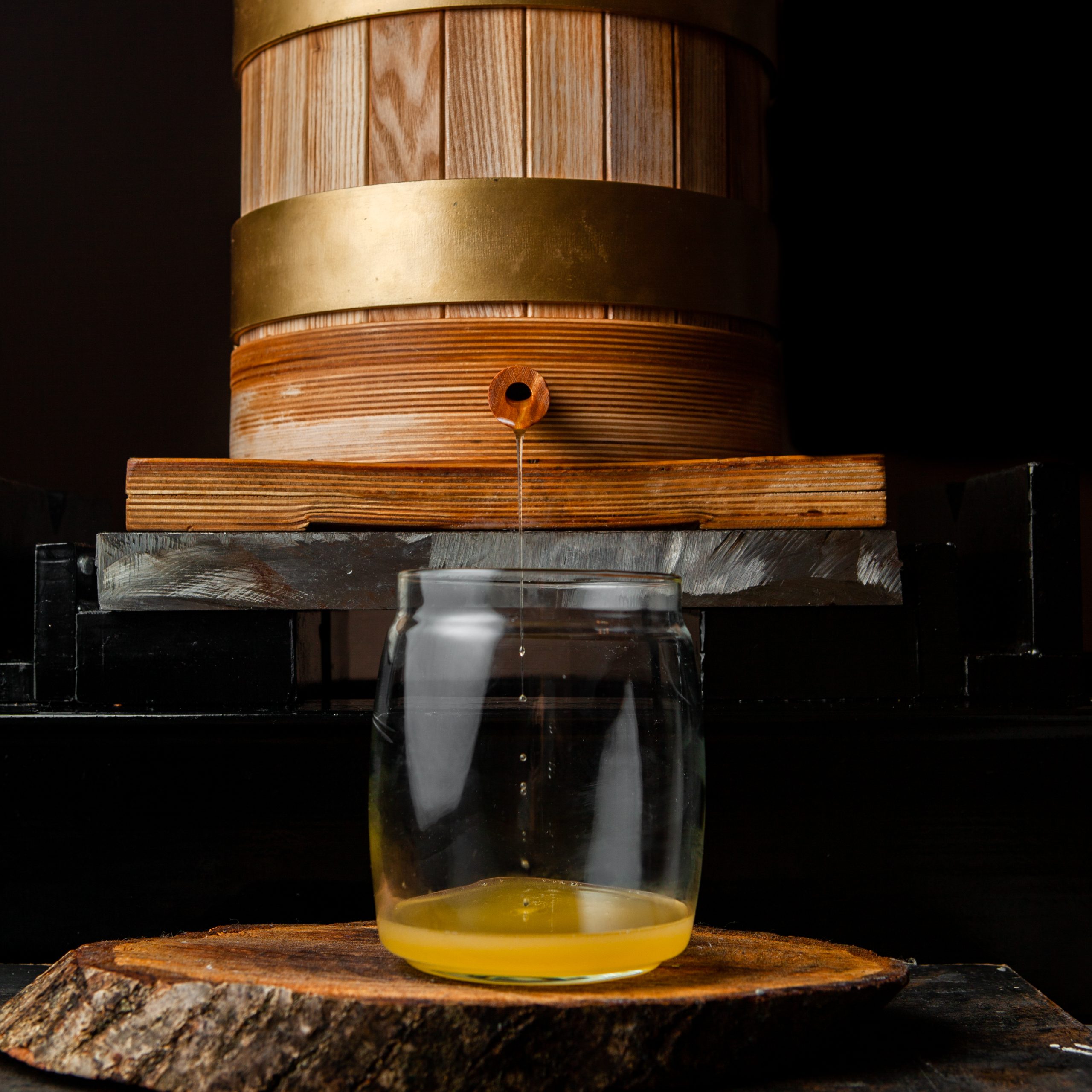
The Kithul palm, found in Sri Lanka’s misty highlands and lush forests, has been a traditional source of sweet sap for generations. Local communities collect the sap at dawn, and after boiling it down, it becomes Kithul treacle — a rich, caramel-like syrup with a unique, deep Sri Lankan flavor.
Native to South Asia, with deep cultural roots in Sri Lanka, used in food and Ayurveda for centuries.
Grown in wet zones like Ratnapura and Kegalle, taking 10–15 years to mature, harvested sustainably.
Sap tapped from the flower and boiled over firewood to make treacle or jaggery, without chemicals.
A key income source for rural communities, supporting thousands of families, with growing potential in global markets.
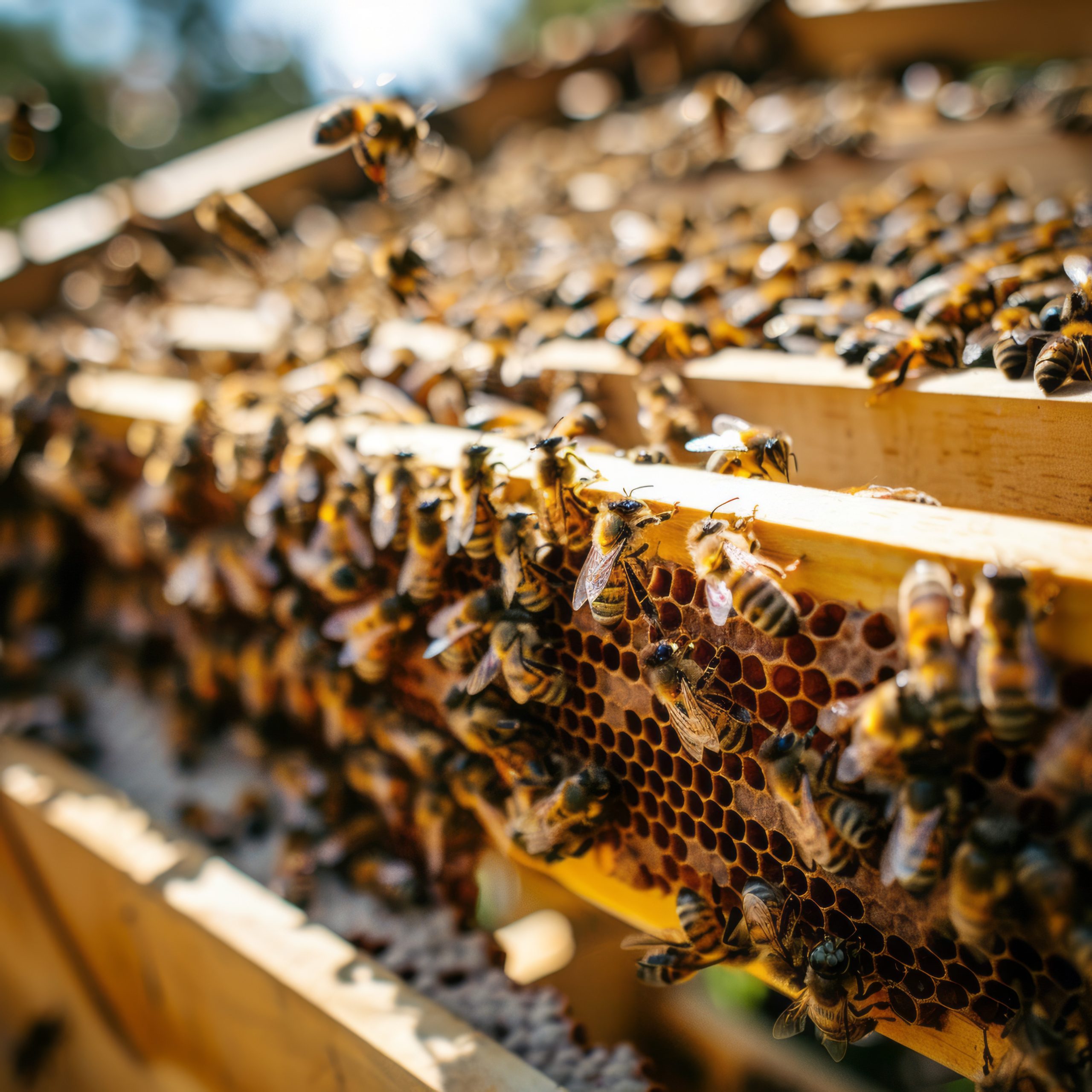
In Sri Lanka’s forests and mountain villages, beekeeping has been a centuries-old tradition. Known for its rich flavor and medicinal value, Sri Lankan bee honey is collected by hand and sold locally or exported. This natural sweetener links ancient wisdom with sustainable livelihoods, blending nature, culture, and care.
Originated from indigenous honey hunting, with modern beekeeping introduced during colonial times.
Bees raised in rural areas like Uva and Kandy, benefiting from diverse flora for rich honey production.
Harvested by hand, lightly filtered, and bottled to preserve its natural qualities.
A low-cost, eco-friendly income source for rural families, particularly empowering women.
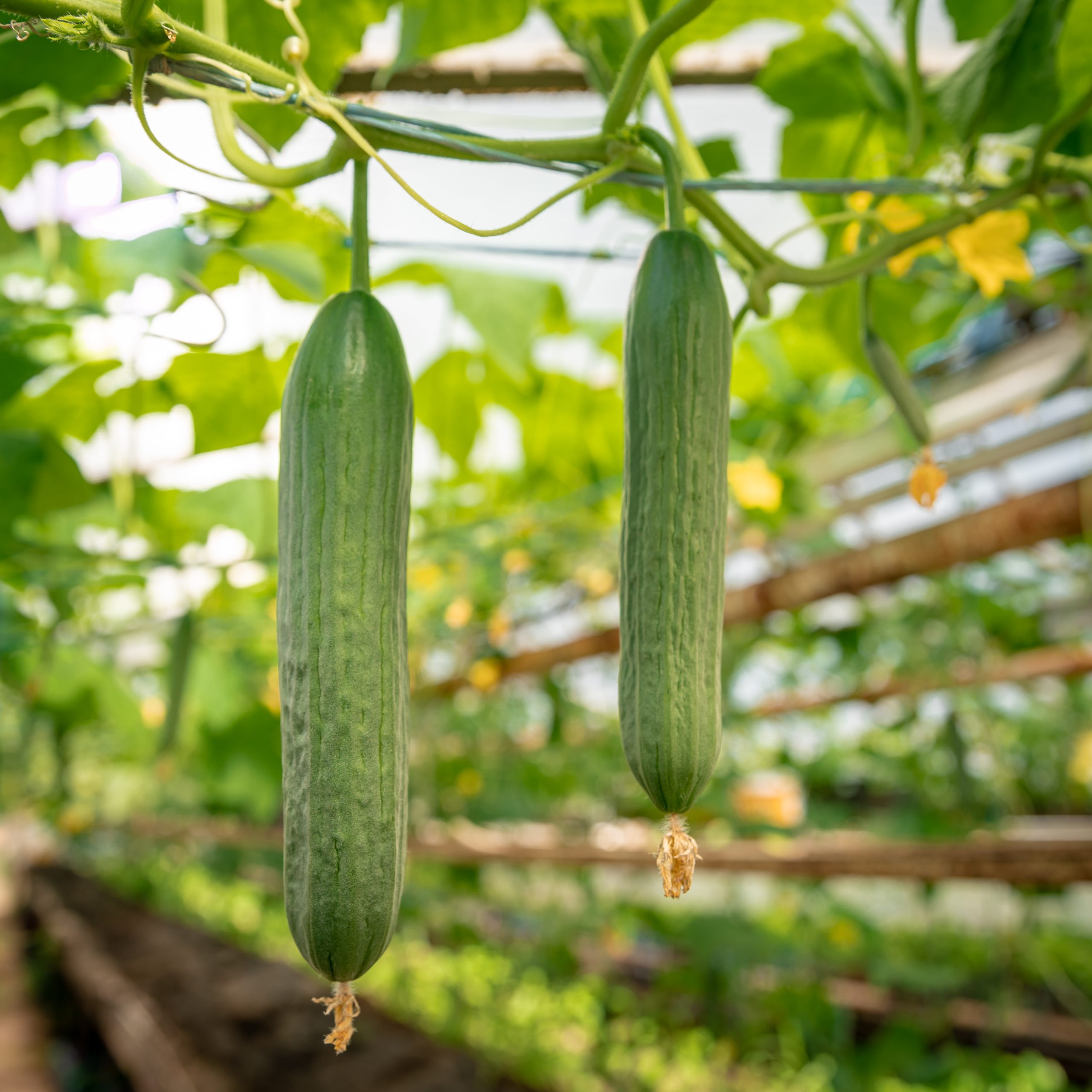
Introduced to Sri Lanka in the 1990s, gherkins are small pickling cucumbers mainly grown for export. Pioneered by companies like Forbes & Walker, they supply major pickle buyers in the USA, despite limited local consumption.
Brought to Sri Lanka in the 1990s for export, especially to Europe, USA & Japan.
Gherkins are grown in dry zones after the paddy season and harvested within 30–40 days, providing small farmers with extra income from otherwise idle land.
Picked young, washed, and preserved in brine or vinegar for export.
Provides steady income for small farmers, especially through contract farming and local processing jobs.
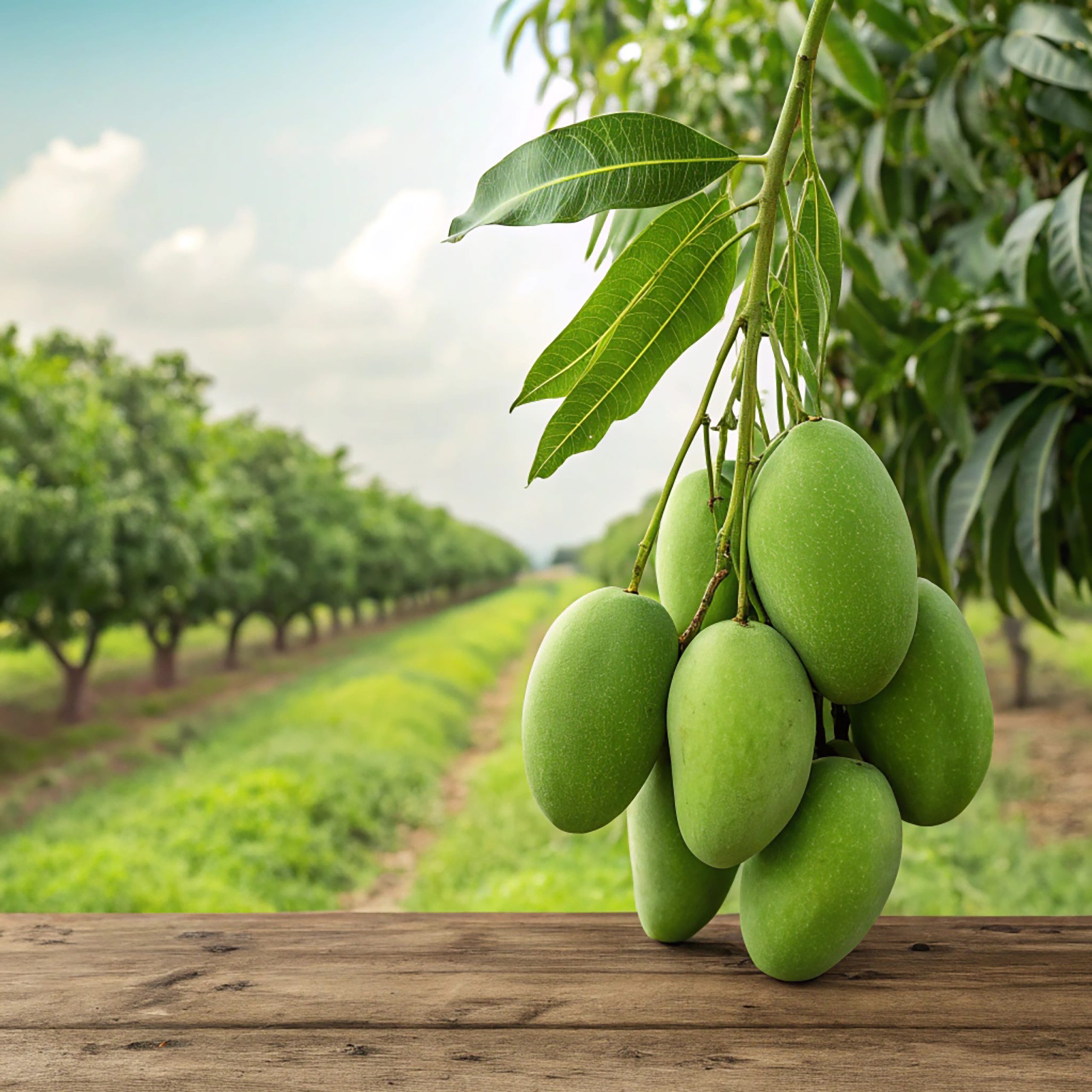
Mangoes thrive in Sri Lanka’s dry zones and are enjoyed fresh or as juice, chutneys, and pickles. Around the turn of the century, a local agripreneur developed a new variety based on the Indian Alphonso, turning a home garden fruit into a growing industry. Today, mango farming supports small farmers and attracts industrial players to meet both local and international demand.
Native to South Asia, mangoes have long been part of Sri Lankan agriculture and cuisine; the TJC mango, cultivated on our farm, is larger and sweeter than traditional types.
Primarily grown in dry zones like Anuradhapura and Jaffna, where they thrive in hot, arid conditions with seasonal rainfall.
Consumed fresh or processed into juice, pulp, dried slices, and chutneys for both local use and export.
An expanding agro-industry that supports smallholder incomes and shows increasing export potential.

Cashew (Anacardium occidentale L), native to Northeast Brazil, was introduced to Sri Lanka by the Portuguese for soil erosion control. Although present for centuries, commercial cultivation began in 1973 with the Sri Lanka Cashew Corporation. Key growing areas are in the dry zone, including Puttalam, Vavuniya, Mannar, Jaffna, Kilinochchi, Trincomalee, Kurunegala, and Hambantota.
In 2023, Sri Lanka had 14,845 hectares of cashew under cultivation, with 11,134 hectares in bearing. The country produced over 13,000 metric tons of raw cashew nuts, yielding an average of 1,169 kg/ha.
Cashew cultivation has declined by over 30% in the last decade, dropping from 21,370 hectares in 2014 to current levels.
Despite the reduction in cultivated area, average yields have more than doubled, with major improvements observed between 2018 and 2020.
Forbes & Walker Fine Foods sources premium raw cashews from Puttlam (home to its processing facility), as well as from Kurunegala, Mannar, and Batticaloa—ensuring consistent quality and supply.

Sri Lanka, historically known as Serendib, has been renowned for centuries for its prized cinnamon. Native to the island, Cinnamomum verum—“true cinnamon”—is celebrated as the finest in the world. Revered by ancient civilizations and still a key export, its cultivation remains a tradition passed down through generations, rooted in skill, labor, and national pride.
Cinnamon is primarily grown in Sri Lanka’s southern coastal regions, covering over 30,000 hectares with ideal climate and soil conditions.
Native to Sri Lanka, true cinnamon (Cinnamomum verum) has been cultivated for over 2,000 years, making the country the world’s leading producer.
The traditional, artisanal process involves hand-peeling the bark, rolling it into quills, and sun-drying, enhancing its aroma and quality.
Cinnamon farming is largely organic, using eco-friendly methods and supporting smallholder, community-based farming systems.

In Sri Lanka’s dry North Central and Eastern Provinces, peanuts—locally known as “rata cadju”—are a vital yet understated crop. Grown by generations of smallholder farmers, they support rural livelihoods and play an important role in food security and local industry.
Peanuts are grown in Sri Lanka's dry zones (Anuradhapura, Moneragala, Kurunegala, Ampara) in sandy, well-drained soils, often as an inter-crop with larger trees.
Originally from South America, peanuts were introduced to Sri Lanka and have become integral to small-scale farming in semi-arid regions.
Peanuts are sun-dried, shelled, and graded, sold raw, roasted, or processed into peanut butter, oil, and snacks for local and export markets.
The peanut sector supports farming families and contributes to the economy, with growing global demand for plant-based protein increasing its market value.

The Kithul palm, found in Sri Lanka’s misty highlands and lush forests, has been a traditional source of sweet sap for generations. Local communities collect the sap at dawn, and after boiling it down, it becomes Kithul treacle — a rich, caramel-like syrup with a unique, deep Sri Lankan flavor.
Native to South Asia, with deep cultural roots in Sri Lanka, used in food and Ayurveda for centuries.
Grown in wet zones like Ratnapura and Kegalle, taking 10–15 years to mature, harvested sustainably.
Sap tapped from the flower and boiled over firewood to make treacle or jaggery, without chemicals.
A key income source for rural communities, supporting thousands of families, with growing potential in global markets.

In Sri Lanka’s forests and mountain villages, beekeeping has been a centuries-old tradition. Known for its rich flavor and medicinal value, Sri Lankan bee honey is collected by hand and sold locally or exported. This natural sweetener links ancient wisdom with sustainable livelihoods, blending nature, culture, and care.
Originated from indigenous honey hunting, with modern beekeeping introduced during colonial times.
Bees raised in rural areas like Uva and Kandy, benefiting from diverse flora for rich honey production.
Harvested by hand, lightly filtered, and bottled to preserve its natural qualities.
A low-cost, eco-friendly income source for rural families, particularly empowering women.

Introduced to Sri Lanka in the 1990s, gherkins are small pickling cucumbers mainly grown for export. Pioneered by companies like Forbes & Walker, they supply major pickle buyers in the USA, despite limited local consumption.
Brought to Sri Lanka in the 1990s for export, especially to Europe, USA & Japan.
Gherkins are grown in dry zones after the paddy season and harvested within 30–40 days, providing small farmers with extra income from otherwise idle land.
Picked young, washed, and preserved in brine or vinegar for export.
Provides steady income for small farmers, especially through contract farming and local processing jobs.

Mangoes thrive in Sri Lanka’s dry zones and are enjoyed fresh or as juice, chutneys, and pickles. Around the turn of the century, a local agripreneur developed a new variety based on the Indian Alphonso, turning a home garden fruit into a growing industry. Today, mango farming supports small farmers and attracts industrial players to meet both local and international demand.
Native to South Asia, mangoes have long been part of Sri Lankan agriculture and cuisine; the TJC mango, cultivated on our farm, is larger and sweeter than traditional types.
Primarily grown in dry zones like Anuradhapura and Jaffna, where they thrive in hot, arid conditions with seasonal rainfall.
Consumed fresh or processed into juice, pulp, dried slices, and chutneys for both local use and export.
An expanding agro-industry that supports smallholder incomes and shows increasing export potential.